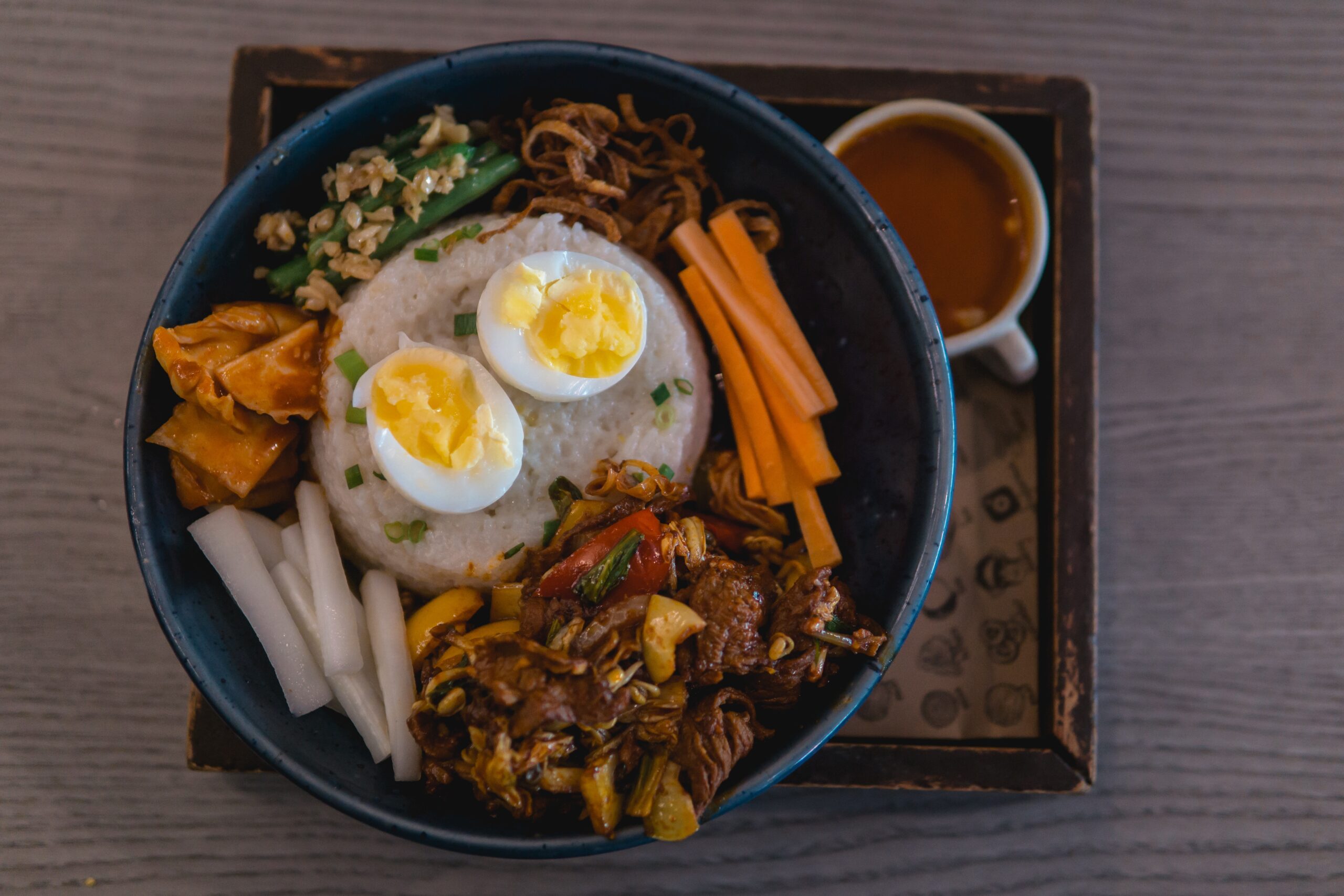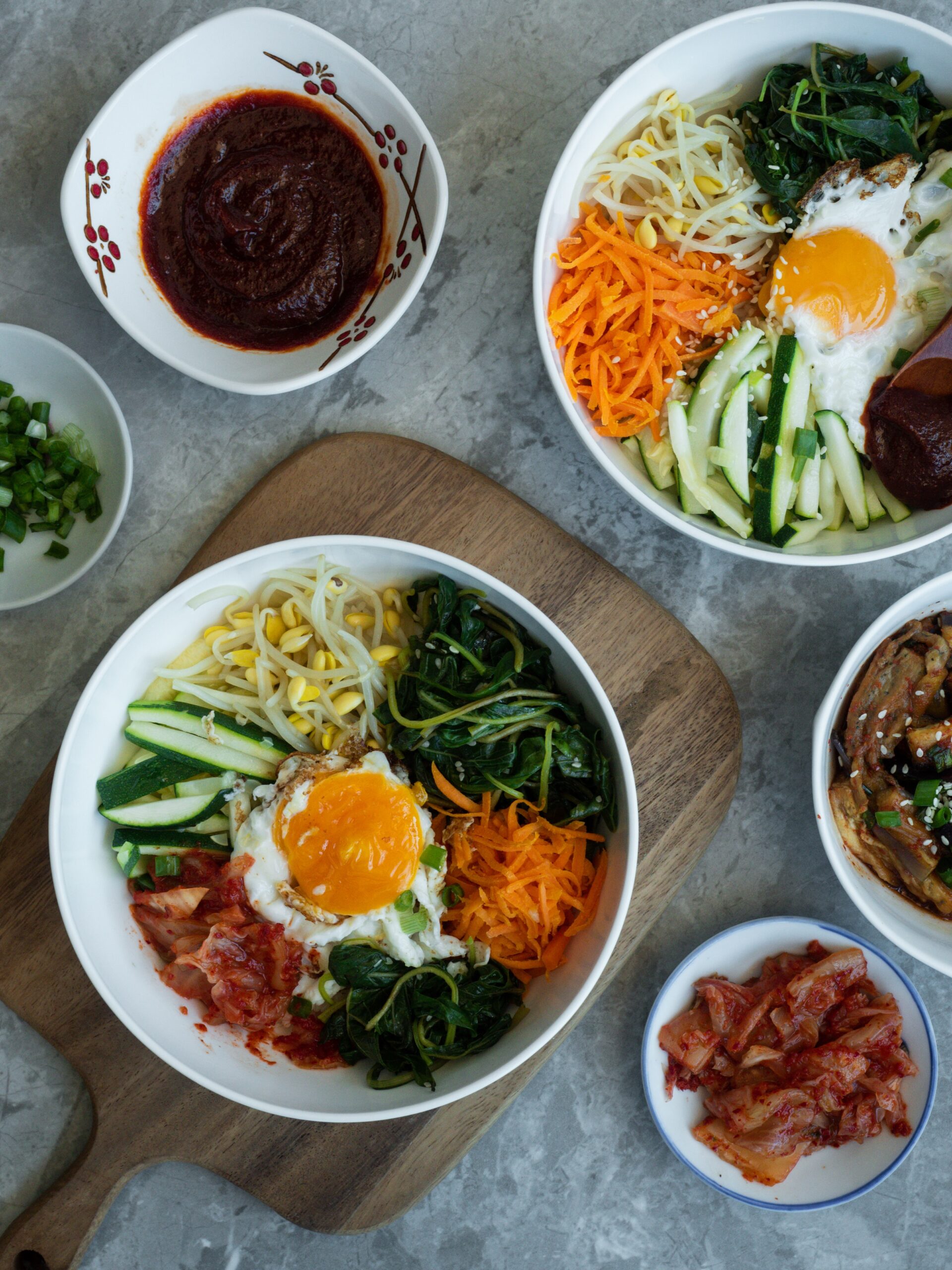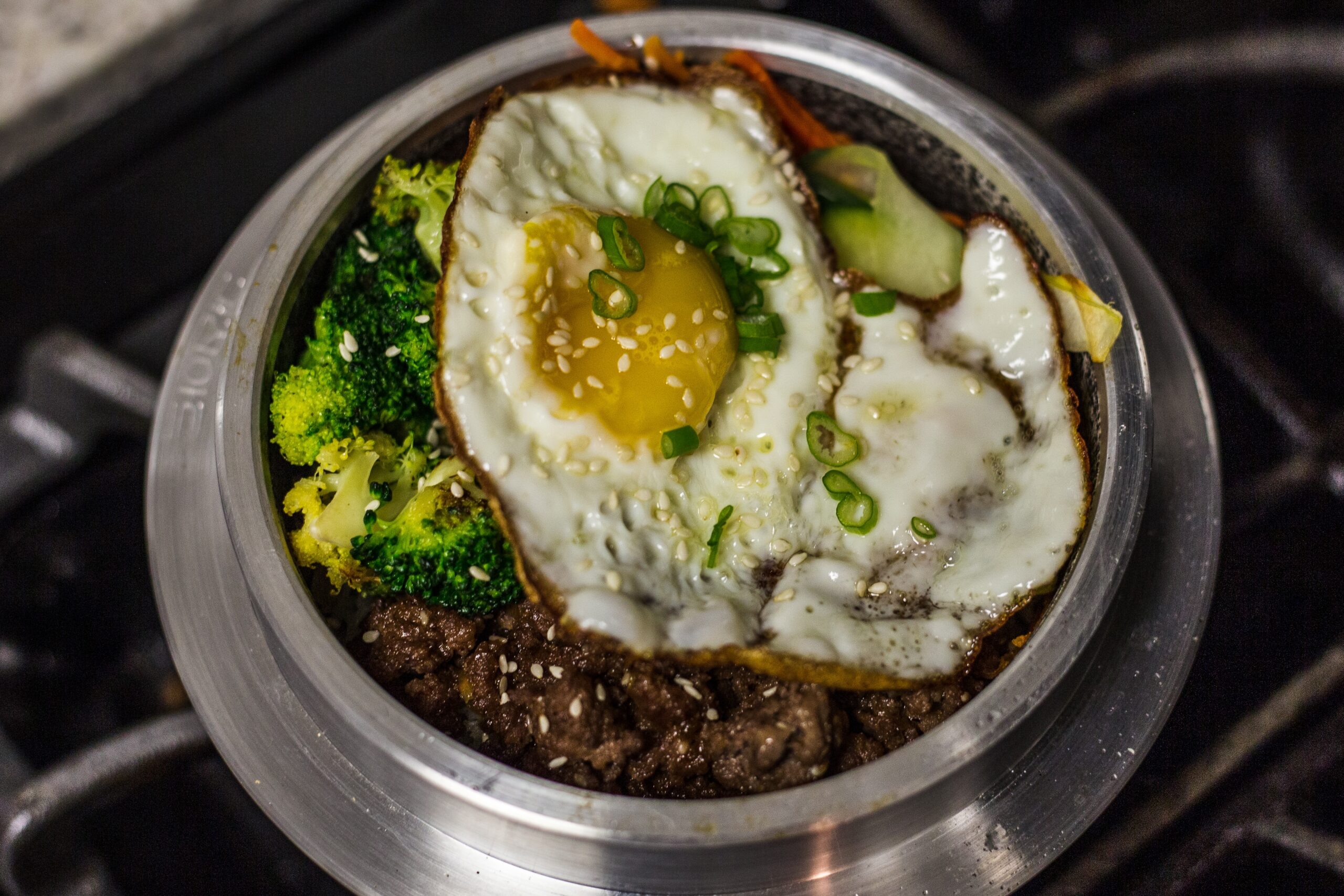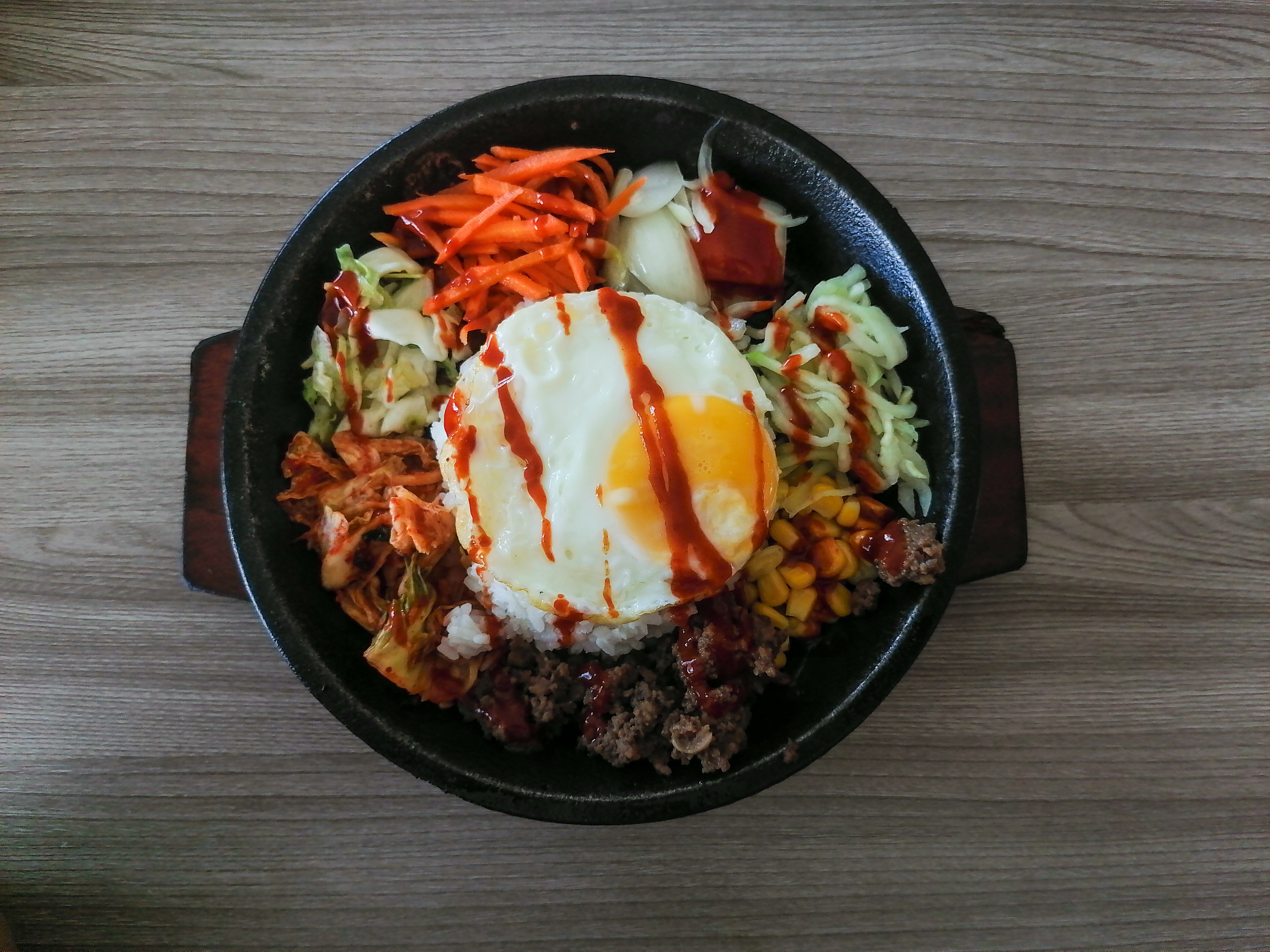Bibimbap is a traditional Korean dish consisting of rice combined with various meats and vegetables. As a result, the number of bibimbap restaurants in various parts of the globe has increased due to its increased popularity as a healthy dining option. There are many methods to enjoy this dish, including traditional bibimbap, regional variations, and fusion styles. Continue reading to learn about bibimbap.
What is Bibimbap
It is known as bibimbap, where bibim means “mixed” and bap means “rice.” This popular Korean dish is comprised of steamed white rice, assorted fresh, marinated, and sautéed vegetables, and, if desired, uncooked or seared meat. Constantly served with a sunny-side-up egg and crunchy, lightly seasoned seaweed segments. Kimchi or other fermented vegetables and pickled ingredients add depth, while gochujang, Korea’s emblematic fermented red chili pepper paste, imparts a smoky, savory, slightly sweet, and slightly spicy flavor profile to the bowls. The flavors and textures are crisp and succulent, peppery and sweet, with pickled and fermented notes.
You might believe that bibimbap is too complicated for you if you see the final product, but you would be incorrect. According to legend, it has existed for centuries and has spanned both the highest and lowest levels of society: Some say it was served to emperors and government officials at lavish parties, while others say it was a cheap and convenient one-bowl meal prepared by farmers’ wives with rice and seasonal ingredients. In any case, these legends remain accurate, as bibimbap can be as straightforward or as complex as desired.
Perhaps Bibimbap best exemplifies the spirit of sharing and integration that has permeated Korea’s 5,000-year history. Vegetables from all four seasons, the rich flavors of fermented condiments, and their fusion create countless flavor combinations. The rice, vegetables, meat, and fermented condiments provide the ideal balance of carbohydrates, protein, and fiber. The art of Bibimbap, which combines various ingredients in a single dish, represents the earliest example of balance and harmony in Korean culture.
The History of Korean Bibimbap
Goldongban, a dish with the same concept (a bowl of rice with assorted vegetables, meat, and sauce), emerged during the Joseon Period (14th to 16th centuries) and predates Bibimbap by several centuries. Goldongban contained a ritualistic and banquet element. On the eve of the lunar new year, it was consumed, enabling people to clean out their pantries by tossing whatever was left over into their rice bowls, mixing it all together, and calling it dinner.
Bibimbap is first mentioned by name in a late-19th-century cookbook titled Siuijeonseo. Diverse hypotheses propose that it was a traditional dish for farmers during the harvest, as it could be easily prepared in large quantities to feed many farmhands, or that it originates in the jesa ancestral rites, in which offerings of food made as a gift to ancestors were assembled in a bowl prior to consumption. These theories may be overly complicated; it does not require an exotic origin narrative to conceive of mixing leftovers with rice and eating them.
Originally a basic dish, Bibimbap is currently undergoing a process of sophistication. Bibimbap, a dish consisting of rice, vegetables, meat, and sautéed ingredients, is regarded as the emblematic dish of Korean cuisine by both Korean society and the international community. The earliest historical documentation of Bibimbap dates back to the late 19th century. Korean Air introduced Bibimbap to its in-flight meal menu at the beginning of the 1990s, and it soon became one of the most popular in-flight menu items in the world.
Bibimbap – Korean Food Icon
Bibimbap is a highly adaptable dish that can be prepared with a wide variety of ingredients. It has existed in Korea for centuries and is still present in modern society. It originated from the practice of early rural Koreans combining leftover vegetables and meat with rice in a bowl. This was inexpensive and required less time and space than a traditional meal.
Bibimbap was originally written in hanja because ancient Chinese characters were used in Korea. There are two ancient texts that imply the original motivation for the creation and use of bibimbap. The first, titled “People’s Unofficial Story of Jeonju”, describes Jeonju bibimbap being served at gatherings that included provincial government officials. The second was “Lannokgi”, which described how bibimbap was prepared by the wives of farmers who lacked the time to prepare traditional meals with many side dishes. Instead, they were able to toss most of the ingredients into a bowl, occasionally adding whatever they were cultivating at the time. King Sejong the Great created the Hangul (Korean alphabet) to enhance the state’s literacy. As a result, bibimbap began to be referenced more frequently in both hanja and Hangul (Korean alphabet) records.
The division of Korea in the 20th century resulted in a cultural divide in the development of bibimbap, resulting in two distinct varieties associated with North and South Korea. Pyongyang for its vegetable bibimbap in the north and Jeonju for its Jeonju bibimbap are the most renowned regions for traditional bibimbap.
Late in the 20th century, bibimbap began to gain popularity in many Western nations due to its ease of preparation, low price, and delectable flavor. It was served by numerous airlines connecting to South Korea via Incheon International Airport, and its popularity as a Korean dish spread internationally. Bibimbap has been described as a symbol of Korean culture to non-Koreans as a result of Korea’s increasing openness to foreigners and multicultural traditions.
How to Eat Bibimbap
Bibimbap is traditionally eaten by mixing all of the ingredients, including the egg yolk, the fresh, fermented, and sautéed vegetables, the raw or seared protein of choice, and the soy, sesame, and gochujang condiments. But if you prefer to consume in a military fashion, feel free to go your own way. Ultimately, this is the appeal of exquisite bibimbap.
Types of Korean Bibimbap
Jeonju Bibimbap
Jeonju bibimbap is considered the most emblematic form of bibimbap. The broth from a beef brisket is used to cook the rice, which is topped with the dish’s unique yukhoe (beef tartare) and egg yolk. In addition, Jeonju bibimbap is sometimes served with yak gochujang, a spicy pepper paste blended with fried beef, and bean sprout broth.
Andong Bibimbap
Heotjesabap is a combination of the words heot, which means “fake,” and jesabap, which refers to a supper consisting of food left over from ancestral rituals. Heotjesabap is most closely associated with Andong, where Confucian scholars were known to consume it even when there was no ritual service taking place. This bibimbap is distinctive in that it does not contain the three essential Korean seasonings of spring onion, garlic, and red pepper powder. Instead of red pepper paste, Heotjesabap is seasoned with soy sauce, sesame oil, and sesame seeds. Also served as side dishes are ritual dishes such as sanjeok (skewers) and mackerel.
Tongyeong Bibimbap
To make Tongyeong bibimbap, you mix cooked rice with sauce and blanched shrimp, clams, and sea squirts. Occasionally, seafood broth is added to enhance the flavor. This dish pairs exceptionally well with clam and tofu broth.
Jinju Bibimbap
Jinju in Gyeongsangnam-do also has a unique spin on bibimbap. On top of steamed rice are vegetables including braised fern bracken and bean sprouts. Then, chopped beef and clear soybean soup (jang guk) are put in a bowl and served with mung bean jelly (cheongpo), beef tartare (yukhoe), and red pepper sauce. Yukhoe is the signature ingredient of Jinju bibimbap, but prepared beef is also served. Yukhoe bibimbap is often on the menus of restaurants in Jinju. These places have been around since the 1920s, when Jinju was a busy cattle market.
Bibimbap in the Sky
Passengers’ preferred in-flight supper is bibimbap. According to reports, the late singer Michael Jackson ate bibimbap multiple times during his stay in Korea after sampling it on a flight. Multiple airlines serve bibimbap with steamed rice, artfully arranged namul, and fiery red pepper paste. There is also a mild red pepper paste for those who are not accustomed to consuming spicy foods.
To conclude
Bibimbap is a traditional Korean food that is revered for being both tasty and beneficial to one’s health. It is a well-balanced meal that is rich in protein, carbohydrates, vitamins, and minerals. While there are no scientific studies to support the health claims made about bibimbap, basic ingredient modifications can make it even healthier. With the proper ingredients and flavors, bibimbap can be made delectable and nutritious.



